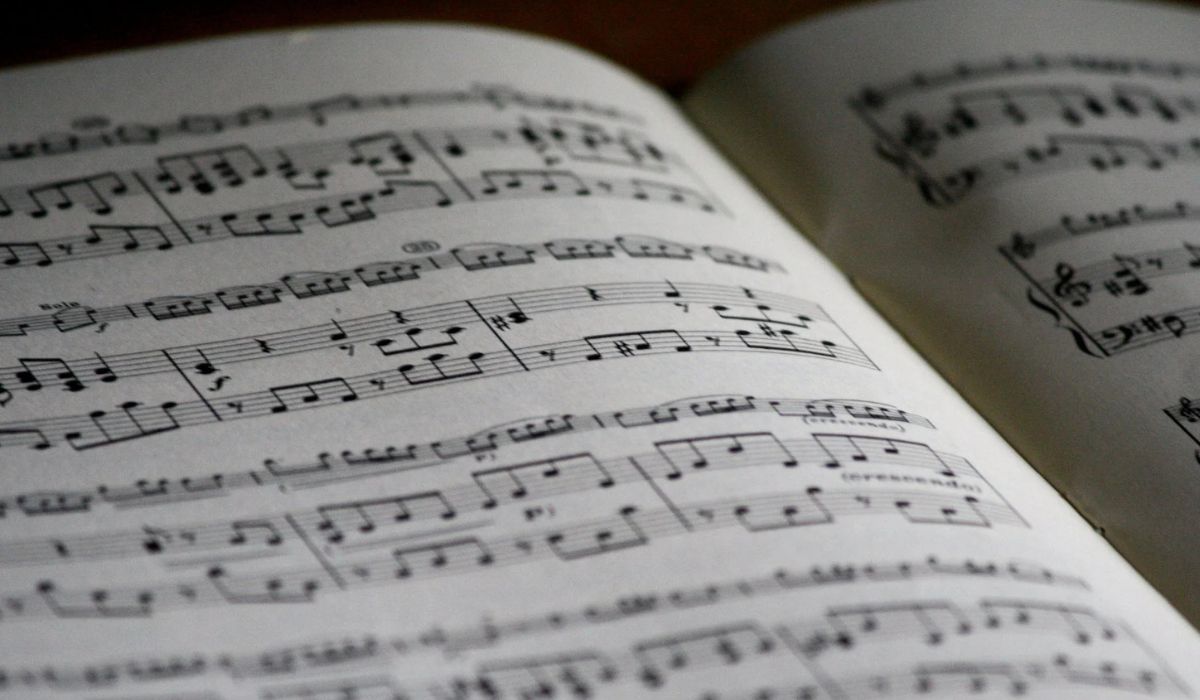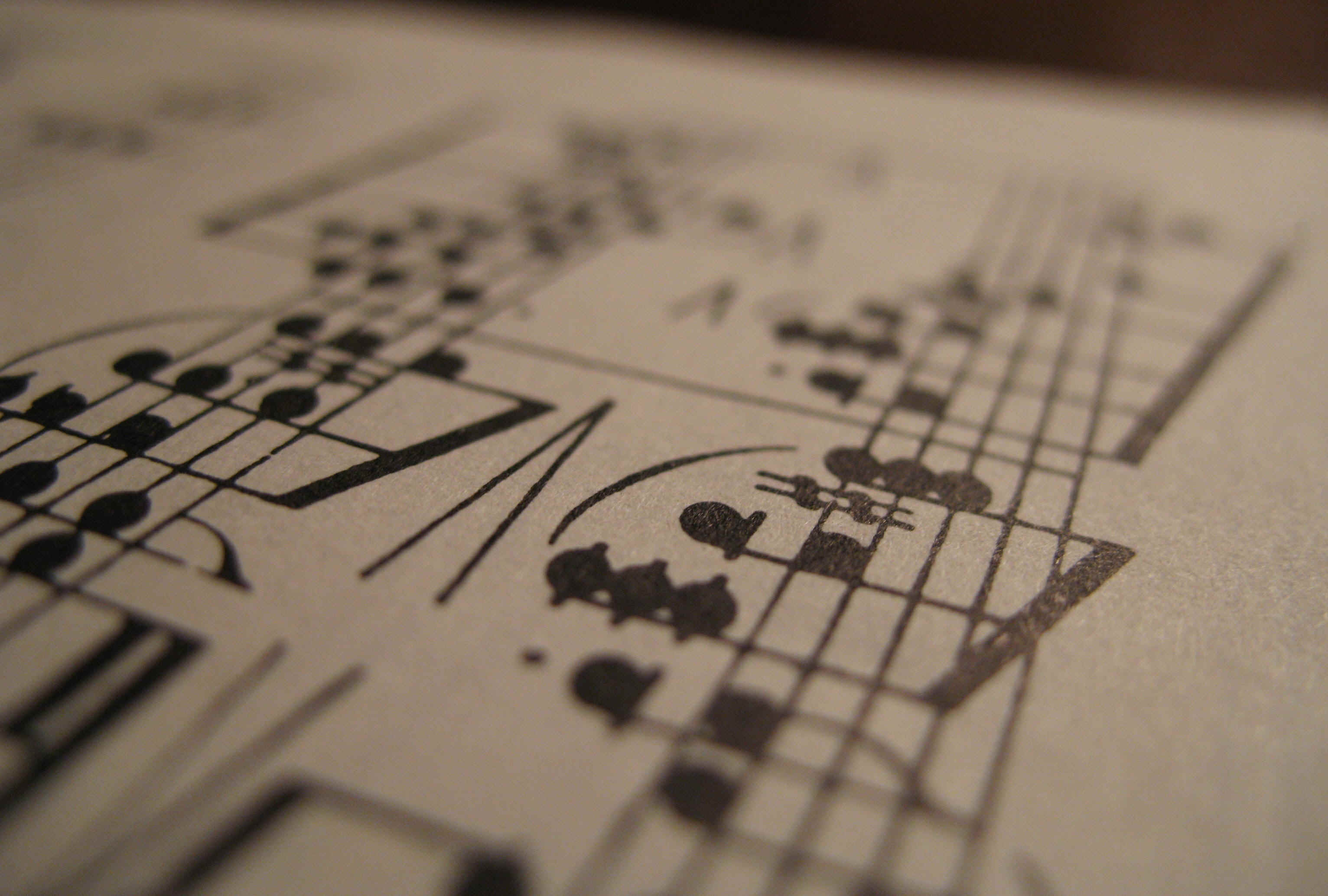Home>Production & Technology>Music Theory>How To Learn Music Theory Guitar


Music Theory
How To Learn Music Theory Guitar
Modified: February 15, 2024
Learn guitar music theory and improve your understanding of chords, scales, and progressions with our comprehensive guide. Master the foundations of music theory to enhance your guitar playing skills.
(Many of the links in this article redirect to a specific reviewed product. Your purchase of these products through affiliate links helps to generate commission for AudioLover.com, at no extra cost. Learn more)
Table of Contents
Introduction
Playing the guitar is not just about strumming chords or memorizing songs. To truly excel as a guitarist, it’s crucial to have a solid foundation in music theory. Music theory is the language of music, and it provides the groundwork for understanding how melodies, harmonies, and rhythms work together.
Learning music theory will not only enhance your understanding of the guitar but will also make you a better musician overall. It will open up a world of possibilities for creating your own music, improvising solos, and understanding the music you play on a deeper level.
In this article, we will explore the importance of learning music theory for guitarists and how it can benefit your playing. We’ll delve into topics such as understanding scales and chords, reading sheet music, ear training, and applying music theory to your guitar playing. Whether you’re a beginner guitarist or have been playing for years, this article will provide valuable insights to take your musical journey to the next level.
So grab your guitar, get comfortable, and let’s dive into the world of music theory!
Why Learn Music Theory for Guitar?
Learning music theory is often overlooked by many guitarists, especially those who are self-taught or have primarily focused on playing by ear. However, understanding music theory is essential for musicians of all levels, and here’s why it’s so important for guitarists:
1. Expanded Musical Vocabulary: Music theory gives you a comprehensive understanding of the building blocks of music. By learning scales, chords, and progressions, you expand your musical vocabulary, allowing you to create more diverse and interesting compositions and improvisations.
2. Improvisation Skills: With a solid understanding of music theory, you will be able to improvise confidently and creatively. Knowing which notes and scales to play over different chord progressions and how to navigate the fretboard effectively opens up endless possibilities for improvisation.
3. Communication and Collaboration: Music theory is the universal language that musicians use to communicate with each other. By learning music theory, you can better communicate your musical ideas to other musicians, whether in a band setting or during a jam session.
4. Transcription and Repertoire Expansion: Transcribing music becomes easier when you have a foundation in music theory. You can analyze the melodies, chords, and structures of songs more effectively, allowing you to expand your repertoire and learn from your favorite artists.
5. Songwriting and Composition: Music theory provides you with the tools and concepts necessary for writing your own songs and compositions. You’ll be able to understand how different chord progressions create different moods and emotions, opening up a world of creativity as a songwriter.
6. Understanding Guitar Techniques: Music theory helps you understand how different guitar techniques work. By understanding the theory behind techniques such as bending, sliding, and vibrato, you’ll be able to apply them more effectively in your playing and musical expression.
7. Overall Musical Development: Learning music theory deepens your understanding of music as a whole. It gives you a broader perspective, allowing you to appreciate and analyze music from different genres and eras. This comprehensive musical understanding will enrich your playing and overall musical development.
By taking the time to learn and understand music theory, you’ll not only become a better guitarist but also a more well-rounded musician. It’s an investment that will pay dividends throughout your musical journey.
Basic Terminology
Before diving deeper into music theory for guitar, it’s important to familiarize yourself with some basic terminology that will be used throughout your musical journey. Here are key terms you should know:
1. Notes: The fundamental building blocks of music. Notes are represented by letters (A, B, C, etc.) and are played on the guitar by pressing down on specific frets.
2. Scales: A series of notes played in a specific pattern. Scales provide the foundation for melodies and solos. Examples of popular scales include the major scale, minor scale, pentatonic scale, and blues scale.
3. Chords: A combination of three or more notes played simultaneously. Chords are the backbone of harmony in music and are essential for rhythm guitar playing. Common chords include major, minor, dominant, and diminished chords.
4. Chord Progressions: A sequence of chords played in a specific order. Chord progressions create the harmonic structure for songs and provide the framework for improvisation and songwriting.
5. Intervals: The distance between two notes. Intervals determine the relationship between notes and are crucial for understanding scales, chords, and melodies.
6. Key: The tonal center of a song or piece of music. The key determines the scale and chords used in a composition and influences the overall mood and feel of the music.
7. Rhythm: The timing and duration of musical sounds. Rhythm encompasses elements such as beat, tempo, meter, and rhythmic patterns.
8. Time Signature: A notation that indicates the meter of a piece of music. It consists of two numbers placed at the beginning of a musical staff. The top number denotes the number of beats per measure, while the bottom number represents the value of each beat.
9. Dynamics: The variations in volume and intensity in music. Dynamics add expressiveness and emotion to a musical performance and include terms such as piano (soft), forte (loud), crescendo (gradually getting louder), and decrescendo (gradually getting softer).
10. Melody: A linear succession of musical notes that form a memorable tune. Melodies are often sung or played on instruments and are the main focus of many songs and compositions.
By familiarizing yourself with these basic terms, you’ll have a solid foundation to build upon as you delve deeper into music theory for guitar. Understanding these concepts will allow you to communicate and comprehend music more effectively.
Understanding Scales and Chords
When it comes to understanding music theory for the guitar, scales and chords are fundamental concepts that you must grasp. Let’s take a closer look at each of these elements:
1. Scales: A scale is a sequence of musical notes played in a specific order. Scales provide the foundation for melodies and solos. Understanding scales is crucial for improvisation and composing melodies.
Some of the most common scales used in guitar playing include the major scale, minor scale, pentatonic scale, and blues scale. Each scale has a unique pattern of whole steps (W) and half steps (H) that determine its sound and character. For example, the major scale follows a pattern of W-W-H-W-W-W-H, while the minor scale follows a pattern of W-H-W-W-H-W-W.
By learning different scales, you’ll gain the ability to navigate the fretboard more confidently and create melodic phrases that fit harmonically with the music you’re playing.
2. Chords: Chords are combinations of three or more notes played simultaneously. They provide the harmonic foundation and the backbone of rhythm guitar playing. Chords are essential for accompanying vocals, playing rhythm parts, and creating chord progressions.
Some commonly used chords on the guitar include major chords, minor chords, dominant chords, and diminished chords. Major chords have a bright and happy sound, while minor chords have a more melancholic or sad quality. Dominant chords have a strong and resolved sound, while diminished chords create a tense and unresolved feel.
Understanding chord structures and voicings will enable you to strum chords confidently, create interesting progressions, and accompany other musicians effectively.
3. Scales and Chords Relationship: Scales and chords are closely related. Chords are built from scales, and the notes within a chord are derived from the corresponding scale. For example, a C major chord is formed using the notes C, E, and G, which are derived from the C major scale.
By understanding how scales and chords relate to each other, you can easily identify which chords will work harmonically within a specific key or scale. This knowledge allows you to create chord progressions that are musically pleasing and coherent.
Mastering scales and chords is a crucial step towards becoming a proficient guitarist. It not only enhances your improvisational skills but also lays the groundwork for composing your own music and understanding the music you play with greater depth.
Reading Sheet Music for Guitar
Learning how to read sheet music is a valuable skill for any guitarist. While tablature (tabs) is often used for guitar notation, being able to read standard musical notation opens up a wider range of music to explore. Here are key points to consider when reading sheet music for guitar:
1. Staff Notation: The staff consists of horizontal lines and spaces where musical notes are placed. Each line and space corresponds to a specific pitch. Guitar music is typically written on the treble clef staff.
2. Notes and Duration: Notes on the staff indicate which pitch to play. Different note shapes or symbols represent different durations or lengths of the notes. Common note durations include whole notes, half notes, quarter notes, eighth notes, and sixteenth notes.
3. Rests: Rests are symbols that indicate periods of silence or breaks in the music. Rests have durations that align with the corresponding note durations.
4. Accidentals: Accidentals are symbols that modify the pitch of a note. The most common accidentals include sharps (♯), flats (♭), and naturals (♮). These symbols are used to indicate when a note should be played higher or lower than its usual pitch.
5. Key Signatures: Key signatures are placed at the beginning of a staff and indicate the key of the music. They consist of sharps or flats that affect all corresponding notes throughout the piece, eliminating the need for accidentals to be consistently written.
6. Chords and Notation: In guitar sheet music, chord symbols are often written above the staff or placed within the measure to indicate the harmony. These chord symbols provide a guide for the guitarist to play the proper chords along with the melody.
7. Fingering: Fingerings may be included in guitar sheet music, indicating the suggested finger placement on the fretboard for each note. These fingerings can help ensure accuracy and efficiency in playing.
8. Dynamics and Articulations: Dynamics and articulations are markings that indicate changes in volume, expression, and articulation of the music. These include terms such as piano (soft), forte (loud), staccato (short and detached), legato (smooth and connected), and more.
9. Repeat Signs: Repeat signs are used to indicate sections of the music that should be repeated. These signs save space on the page and help structure the music.
10. Time Signatures and Tempo: Time signatures indicate the number of beats per measure and the value of each beat. They are placed at the beginning of a piece or whenever there is a change in the meter. Tempo markings indicate the desired speed or pace of the music.
Mastering the ability to read sheet music for guitar opens up a vast array of musical styles and compositions that can be enjoyed and performed. It allows you to explore classical, jazz, and contemporary music, and gain a deeper understanding of music theory and composition.
Ear Training and Transcription
Ear training and transcription are vital skills for guitarists who want to develop their musical ear and expand their repertoire. These skills enable you to listen to music and accurately reproduce it on your instrument. Here’s how ear training and transcription can benefit your guitar playing:
1. Developing Musical Ear: Ear training helps you develop a keen sense of pitch, intervals, and chord progressions. By actively listening to music, you train your ears to recognize and differentiate between different musical elements. This skill allows you to play songs by ear, improvise melodies, and transcribe music accurately.
2. Transcribing Music: Transcription involves listening to recorded music and notating it on paper or playing it on your instrument. Transcribing music helps you understand the nuances of different genres, learn from your favorite guitarists, and develop your own style. It also enhances your understanding of music theory, as you analyze chord progressions, melodies, and rhythms from the music you transcribe.
3. Improving Solos and Riffs: Ear training enables you to learn solos and riffs by ear, which allows you to accurately capture the phrasing, dynamics, and nuances of the original recording. This skill enhances your ability to replicate the playing styles of your favorite guitarists and incorporate their techniques into your own playing.
4. Enhancing Musical Expression: By training your ear, you develop a deeper connection to the music you play. You begin to recognize and interpret the emotional nuances of different musical elements, such as dynamics, articulations, and phrasing. This understanding allows you to infuse your playing with greater expression, bringing your music to life.
5. Improving Improvisation Skills: Ear training is essential for improvisation. When you have a well-developed ear, you can easily hear and anticipate the notes and chords that will fit harmonically in a given musical context. This skill allows you to create melodies and solos on the spot that are musically coherent and pleasing to the ear.
6. Expanding Repertoire: Through transcription, you can expand your repertoire by learning songs and solos that aren’t available in tablature or sheet music. This opens up a world of music from various genres and eras, allowing you to explore and appreciate a wider range of musical styles.
7. Developing Overall Musicianship: Ear training and transcription skills contribute to your overall musicianship. They sharpen your musical perception, improve your rhythm and timing, and deepen your understanding of music theory. These skills not only benefit your guitar playing but also extend to other aspects of music making, such as composing, arranging, and collaborating with other musicians.
Make ear training and transcription regular parts of your practice routine. As you continue to develop these skills, you’ll notice significant improvements in your musicality, creativity, and ability to connect with the music you play.
Applying Music Theory to Guitar Playing
Applying music theory to your guitar playing is essential for expanding your musical horizons and enhancing your overall musicianship. Here are some ways in which you can apply music theory to your guitar playing:
1. Understanding Chord Progressions: Music theory enables you to analyze and understand the chord progressions used in songs. By recognizing common chord patterns, you can quickly learn new songs and create your own chord progressions that sound musically pleasing. This knowledge allows you to harmonize melodies, create interesting rhythm guitar parts, and improvise over chord changes.
2. Creating Melodic Lines: Music theory helps you create melodic lines that fit harmonically with the underlying chords. By understanding scales, intervals, and chord tones, you can craft melodies that are musically coherent and emotionally expressive. This skill is invaluable for soloing, composing, and improvising on the guitar.
3. Exploring Different Playing Techniques: Music theory provides a framework for understanding different techniques on the guitar. By studying scales and chords, you can experiment with various techniques such as bending, sliding, hammer-ons, pull-offs, and vibrato. You’ll understand how these techniques fit within the context of the music and enhance your playing.
4. Developing Rhythm and Timing: Music theory helps you understand the rhythmic aspects of guitar playing. By studying time signatures, note durations, and rhythmic patterns, you can develop a strong sense of rhythm and timing. This skill allows you to play with precision, groove with other musicians, and create dynamic and engaging rhythmic guitar parts.
5. Applying Music Theory Concepts to Songwriting: Understanding music theory gives you the tools to compose your own music. Whether it’s writing chord progressions, creating melodies, or structuring your songs, music theory provides a foundation for expressing your musical ideas effectively. You can explore different songwriting techniques, experiment with different keys and modes, and craft your unique musical style.
6. Analyzing and Appreciating Music: With a solid understanding of music theory, you can analyze and appreciate music from a technical standpoint. You’ll be able to recognize chord progressions, identify melodic patterns, and understand the harmonic structure of songs. This enriched musical understanding deepens your appreciation for different genres and styles of music.
7. Collaborating with Other Musicians: Being well-versed in music theory allows you to effectively communicate and collaborate with other musicians. You can discuss chord progressions, share musical ideas, and contribute creatively to group dynamics. This collaborative approach enhances your musicality and expands your musical network.
By applying music theory to your guitar playing, you’ll have greater control and versatility in your musical expression. It opens up new creative possibilities, improves your technical skills, and broadens your understanding and appreciation of music as a whole.
Tips for Practicing Music Theory on Guitar
Practicing music theory on guitar is a key component of becoming a well-rounded musician. Here are some tips to help you effectively incorporate music theory into your guitar practice:
1. Start with the Basics: Begin by learning the foundational elements of music theory, such as scales, chords, and basic terminology. Understanding these building blocks will provide a solid foundation for more advanced concepts.
2. Apply Theory to Songs: Practice applying music theory concepts to songs you’re learning or playing. Analyze the chord progressions, identify the key, and try to incorporate the scales and chord tones into your playing. This will deepen your understanding and help you internalize theory concepts.
3. Experiment with Different Keys and Modes: Explore playing in different keys and modes to broaden your musical vocabulary. This will expose you to new sounds and help you understand the relationship between scales, chords, and the overall tonalities of music.
4. Play with Backing Tracks: Use backing tracks or online resources to create a musical context for practicing theory. Play scales, arpeggios, and chord progressions over these tracks to develop your improvisation skills and apply theory concepts in real-time.
5. Transcribe Music: Transcribing music by ear is an excellent way to develop your musical ear and apply music theory. Start with simple melodies and gradually progress to more complex solos or chord progressions. This improves your ability to identify scales, chord progressions, and rhythmic patterns.
6. Practice Ear Training Exercises: Dedicate time to ear training exercises, such as identifying intervals, chords, and melodies by ear. These exercises improve your ability to recognize musical elements and apply them to your guitar playing.
7. Study Music Theory Resources: Supplement your practice with music theory resources, such as books, online courses, tutorials, or lessons. Understand theory concepts in-depth and apply them directly to your guitar playing. Interact with others who are knowledgeable in music theory to gain different insights and perspectives.
8. Seek Feedback and Guidance: Share your progress with a music teacher or experienced musician who can provide feedback and guidance. They can help clarify any confusion or offer suggestions on how to apply theory concepts more effectively.
9. Consistency and Patience: Practice music theory regularly, but be patient with yourself. It takes time to grasp complex concepts, so break them down into smaller, manageable parts and gradually build upon your knowledge and skills.
10. Experiment and Be Creative: Don’t be afraid to experiment and be creative with music theory on the guitar. Explore different phrasing, incorporate techniques, and find ways to express your individuality through your playing. Music theory is a foundation, but it’s your unique voice that makes the music truly yours.
By incorporating these tips into your practice routine, you’ll develop a strong understanding of music theory on the guitar and improve your overall musicianship. Remember to have fun and enjoy the journey of exploring the endless possibilities that music theory offers on the guitar.
Conclusion
Learning music theory is a transformative journey for any guitarist. It provides the tools and knowledge necessary to understand the language of music, communicate with other musicians, and expand your musical horizons. By incorporating music theory into your guitar playing, you enhance your improvisation skills, compose your own music, and deepen your understanding and appreciation of the music you love.
From understanding scales and chords to reading sheet music, ear training, and applying theory to your playing, each aspect of music theory contributes to your growth as a guitarist. It allows you to unlock new creative possibilities, develop a stronger musical ear, and connect with your instrument on a deeper level.
While the study of music theory may seem daunting at first, it is a journey worth embarking on. Set aside dedicated practice time, seek resources and guidance, and be patient with yourself. The more you invest in learning music theory, the more you’ll reap the rewards in terms of musical expression, versatility, and confidence in your playing.
Remember, music theory is not meant to stifle your creativity but rather to empower it. It serves as a framework upon which you can build your unique musical voice. So let the knowledge of music theory guide and inspire you as you explore new genres, create your own compositions, and become the best guitarist you can be.
Embrace the beauty of music theory, and let it be your guide as you embark on a lifelong musical journey with your guitar.











